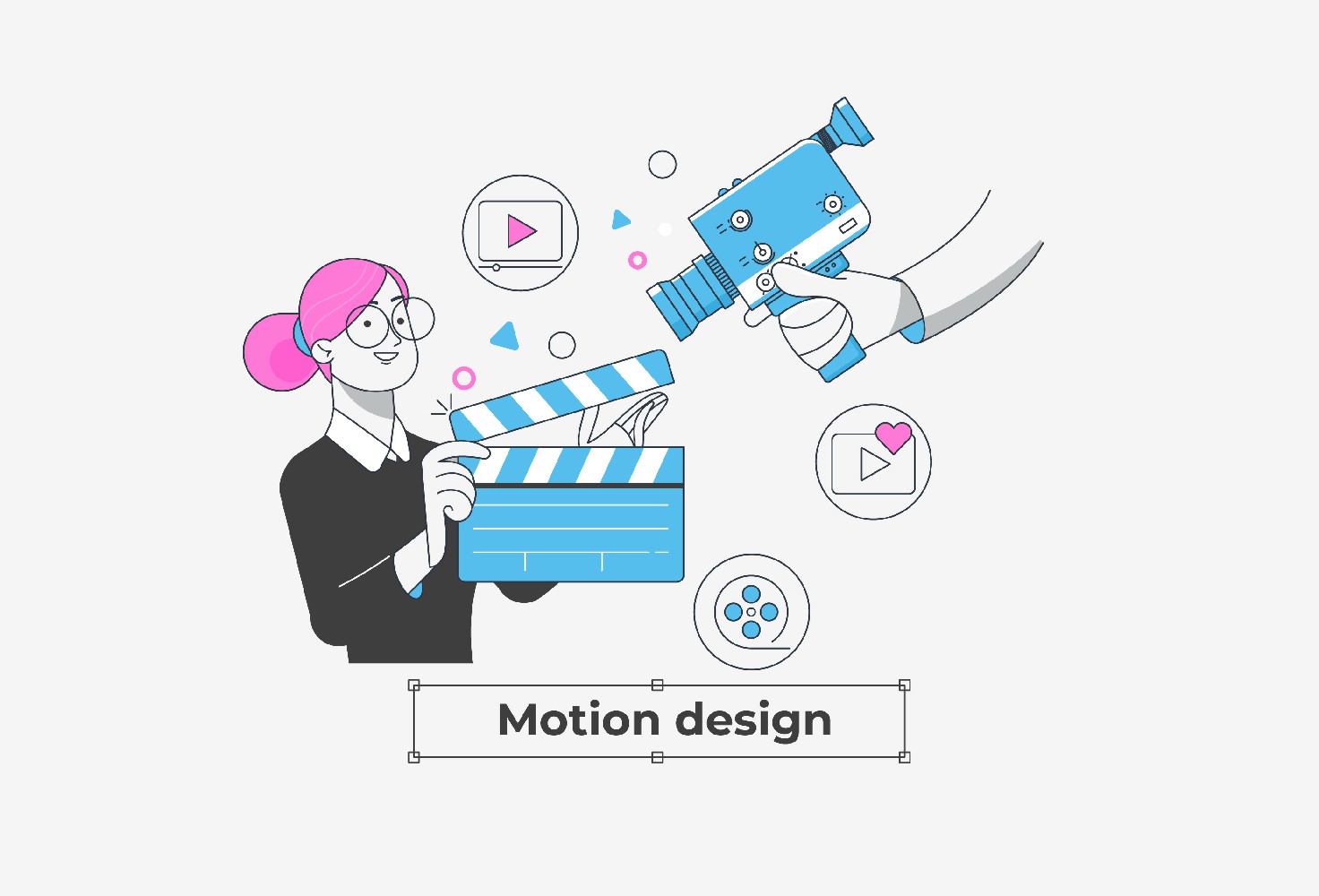Motion graphics are shaping the future of digital animation, making it easier for audiences to understand information through visually engaging videos. Have you ever tried reading data online only to realize it’s much clearer when presented through motion graphics instead? With video content rapidly dominating the internet, motion graphics have become one of the most powerful tools for communication and brand storytelling.
According to Cisco, online videos will account for more than 82 percent of all consumer internet traffic by 2022, a 15-fold increase from 2017. And, as the demand for video content continues to rise, publishers are finding it difficult to keep up with the trend while keeping their audiences engaged. Source: Forbes: State of Online Video 2020

Nowadays, organic search is more likely to be driven by video content than by text alone. This is why the demand for motion graphics in content creation is in its prime. But what makes Motion Graphics the best tool to relay information?
What is Motion Graphics, and How Does it Work?
The animation of graphic designs is known as motion graphics. It uses sound and movement to animate static elements like words and images. These are bits of animation or digital film that provide the impression of movement or rotation and are frequently coupled with a soundtrack for multimedia projects. These are mostly used to create ads, title openers, or explainer videos. It is much easier for the audience to remember the content of your product or brand if you deliver it in a creative way.
Motion Graphics VS Static Infographics
By expressing complex concepts as graphics, charts, maps, and other visual components, Static Infographics successfully blend text and visuals. Because they include static images that do not require user interaction, these visual treatments serve as permanent resources.
In contrast, Motion Graphics brings static elements to life through movement and sound. And even though Static Infographics has always been one of the best methods to deliver your content to the audience, most of the time it fails to make people remember your product unless they are very much intrigued about it. As a result, you fail to uphold the mission of your product and that is to remember what they have just read or seen.
Motion Graphics brings content creation to a whole new level. That is to allow publishers to display complex ideas and still make it easier for the audiences to remember. Not only that but also it allows you to speak to different age groups because while it’s doing its job to relay information, it adds fun, creativity, and engaging element to your topic.
Using Motion Graphics to Proactively Engage Your Audience
When a person activates his or her auditory and visual senses while engaging with a piece of information, this makes it easier for them to relate to an issue. Motion graphic is more likely to cause them to change their minds. Also, the emotional effect of the link between screen-based activity and what we see every day might be amplified. Motion graphics are excellent for engaging an audience, storytelling, or influencing change. When presenting data, you can use moving charts and graphs to attract the attention of your audience and allow them to comprehend complex data. The technique of combining sound and sight emphasizes excitement and passion while maintaining proactive communication – it creates a human connection for your audience.
So Why Use Motion Graphics?
It depends on how much you want your content to stand out. If you want to make your films more elegant and sophisticated, and have the ability to captivate a viewer – to capture and retain their attention for a longer period than static or plain text content. It’s simpler to absorb information from a video than it is to read than go back and read it all over again.
Sometimes, when your article or infographics is wordy, it’s hard to understand the content but with motion graphics, abstract content makes it easy to understand. The spectator can watch a video and take away whatever message the video is attempting to convey and still retain that information for a longer period. Here’s an example of perfectly used motion graphic to explain what do you offer in you service.
Motion graphics are ideal for highlighting or accentuating information and conveying a message. They’re employed when there’s no requirement for a story or a narrative. These videos help simplify and present your complex services or products in a memorable manner.
Keep in mind that before deciding how to present your data visualizations to your audience, you should first decide on the best type of media to fulfill your demands; only then will you be able to develop the type of visual content that will benefit your brand the most.
Final Words
Videos are the future of content creation and computer-animated imagery is the heart of it all. To make the most of the content you want the audience to remember you need to start using high-quality film components that are engaging and memorable. Anything static is old school, you got to take a big leap and start using Motion Graphics.





